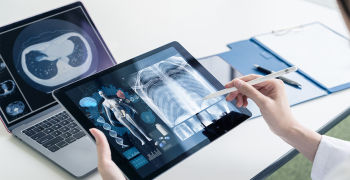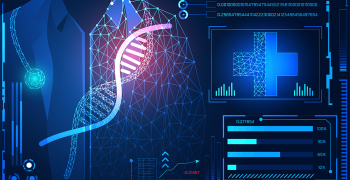Good news for the medical device industry.
After a long wait, in 2022 the US FDA had released their proposed revision for the Quality Management System Regulation (QMSR), taking a major step towards aligning the FDA's Quality System Regulation (QSR) with the international standard for medical device quality management systems, ISO 13485:2016.
The FDA has acknowledged that the QSR has not seen significant revisions since 1996, while ISO 13485 was last updated in 2016. To address this, the agency has proposed amendment of 21 CFR Part 820. Once the amendment is finalized, the FDA's Quality System Regulation will be transformed into the QMSR, aligning all manufacturers under its jurisdiction with ISO 13485:2016.
Some differences may arise in the requisites of ISO 13485, the Federal Food, Drug, and Cosmetic Act (FD&C Act), and QMSR. In such instances, the stipulations of the QMSR will prevail. However, changes to the QMSR are still in the proposal stage and may undergo changes in their final form. Also, to be noted, the FDA has stopped accepting public comments on the proposed rule since May 24, 2022.
The Quality Management System Regulation is an essential regulatory framework that is designed to align the FDA's Quality System Regulation with the internationally recognized standard, ISO 13485:2016. The importance of QMSR cannot be overstated. This proposed regulation fosters consistency in the manufacture and delivery of high-quality medical devices, ensuring patient safety and enhancing the industry's ability to meet customer and regulatory requirements.
The alignment of the FDA's QMSR with ISO 13485:2016 is particularly significant as it serves to harmonize quality management requirements on a global scale, making it easier for manufacturers to comply with regulatory standards across countries. Ultimately, this move will streamline the process of launching new medical devices in the market, particularly for smaller companies. The QMSR, therefore, holds a remarkable potential to revolutionize the medical device industry, making it a topic of great relevance and interest for all stakeholders involved.
Harmonizing regulatory systems across major global markets is a crucial endeavor. It facilitates compliance with international regulations, which is imperative for medical device OEMs operating in multiple jurisdictions. Recognizing the comprehensive and effective approach of ISO 13485:2016, the US FDA intends to align its regulations to minimize disparities. By embracing harmonization efforts, such as establishing the Medical Device Single Audit Program (MDSAP) based on ISO 13485, the US FDA aims to enhance regulatory standardization and simplify market access for MedTech manufacturers.
Inspection Approach
The proposed rule is still unclear about how the FDA plans to inspect device manufacturers under the new QMSR, replacing its current guidelines. The specifics of the new approach have not yet been disclosed, creating a gap in guidance on inspections and inspection findings substantiation as per Form 483. The FDA plans to provide training and education on the new approach, but assessing cGMP compliance during the transition period remains unclear and resolving inconsistencies will take time.
Increased Focus on Risk Management
Implementing the proposed rule will enhance the emphasis on risk management activities and risk-based decision-making, aligning with ISO 13485's focus. Integrating ISO 13485's provisions will help OEMs develop more effective total product life-cycle risk management systems.
Increase of traceability requirements
The new requirements might necessitate updates in the design and manufacturing processes to meet regulatory expectations. This could potentially translate to increased resource allocation and possible redesign of existing products. The heightened focus on traceability and transparency could also lead to increased data management efforts, necessitating the introduction of advanced technological solutions to keep up with the new demands.
The FDA proposes that any final rule based on this proposal will take effect one year after finalization. This allows manufacturers sufficient time to comply with ISO 13485 requirements. Transitioning to the QMSR could present a more substantial regulatory shift for manufacturers operating solely in the United States.
The impending implementation of the QMSR in December 2024 presents MedTech companies with both challenges and opportunities. Now is the opportune time to strategize and prepare for the harmonized regulatory requirements.
For Companies Not ISO 13485 Certified
If you're primarily operating in the US and adhering to the QSR, it would be prudent to contemplate obtaining ISO 13485 certification. At a minimum, a comparison of 21 CFR Part 820 with ISO 13485:2016 will provide a clearer comprehension of your current practices versus the impending QMSR requisites.
ISO 13485:2016 and QSR differ significantly, notably in their approach to risk management. While the FDA anticipates manufacturers to incorporate risk management throughout their quality management system and across the product lifecycle, ISO 13485 stipulates these requirements more explicitly. The integration of ISO 13485 by reference will ensure the new QMSR adopts a more overt stance on the importance risk management in design controls.
For Companies Already ISO 13485 Certified
Being certified with ISO 13485:2016 is an excellent head start but doesn't automatically align you with the QMSR. The reason is that the FDA is introducing new sections to complement what is already in ISO 13485. These include:
- Section 820.7 - Incorporation by reference
- Section 820.10 - Requirements for a quality management system
- Section 820.15 - Clarification of concepts
- Section 820.35 - Control of Records
- Section 820.45 - Device labeling and packaging controls
In conclusion, the FDA's upcoming Quality Management System Regulation marks a significant shift in the agency's approach to medical device regulation. By adopting a risk-based approach to QMSR, the FDA aims to ensure that medical devices are safe, effective, and reliable. The regulation will also require manufacturers to maintain comprehensive documentation and records, undergo regular audits, and implement corrective and preventive actions to address any quality issues. While the implementation of the new regulation may present challenges for manufacturers, it ultimately benefits patients by promoting the development of high-quality medical devices. As the FDA continues to refine and update its regulatory framework, it is essential for manufacturers to stay informed and proactive in their compliance efforts.
To delve deeper into the QMSR requirements and explore how LTTS can assist in navigating these regulatory waters, learn more about our comprehensive services.





